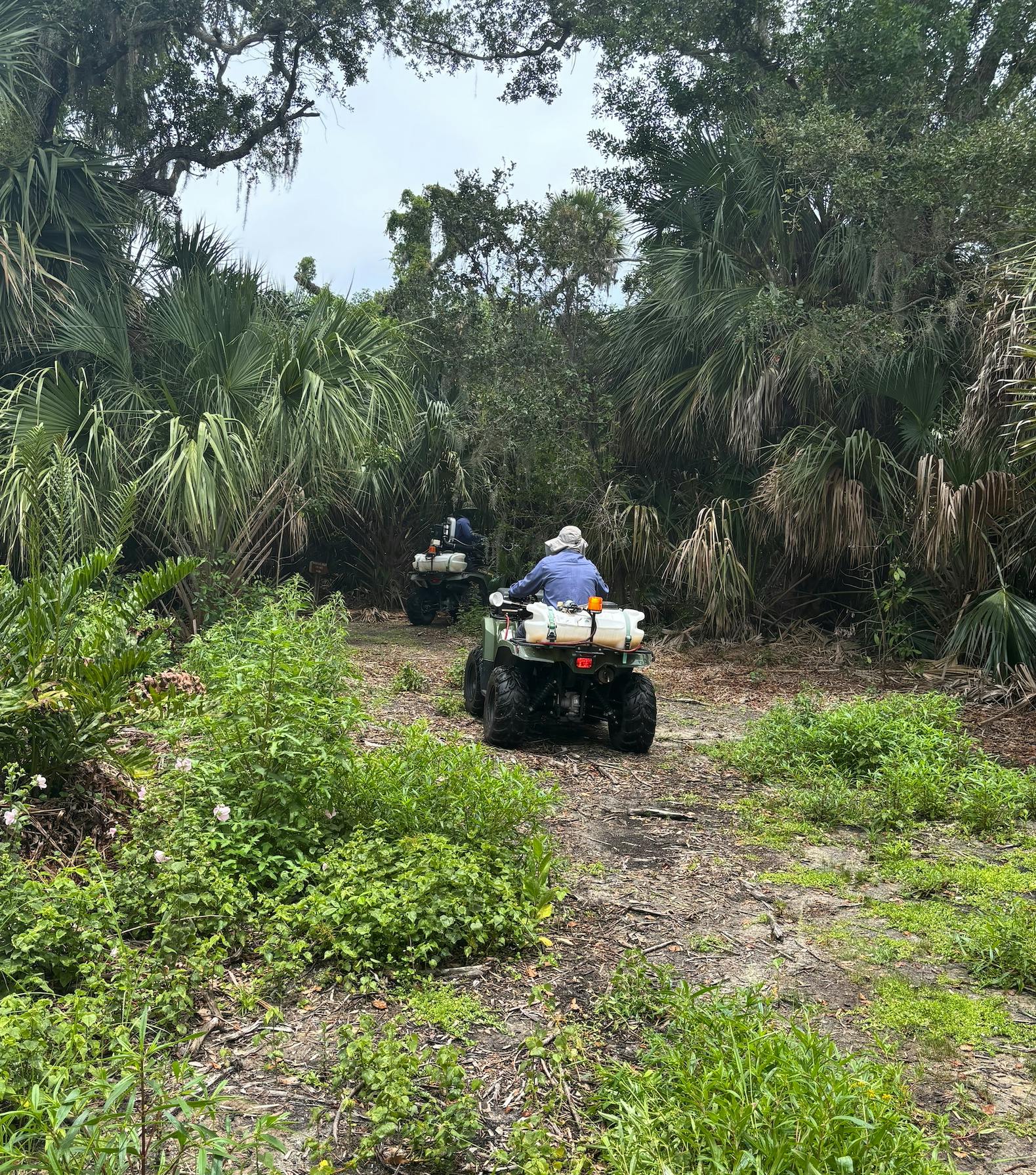UPDATE: High Mosquito Populations, Impoundment pumping has begun.

UPDATE: The level of the lagoon and the tides have increased and we are able to utilize our impoundments as a source reduction measure to control mosquitoes. The saltmarsh mosquitoes have been able to lay their eggs in moist cracks in the ground or in small hard to reach puddles or low-lying areas helping to create high mosquito populations. When the pumping begins there will be mosquito broods that hatch as the eggs were already in the soil, however with the area flooded it will eliminate future production sites for mosquitoes reducing populations in the following weeks.
Please contact the district if you have questions or concerns. 772-562-2393 or irmcd@irmcd.org
For more information see below.
WHY?
The impoundments are connected to the lagoon by culverts which are open to natural tides most of the year to allow for free exchange of water, nutrients, and organisms. During a normal summer season with consistent weather patterns, these areas are kept flooded during this time to minimize the amount of exposed mud available for mosquito egg-laying. Stationary electric or portable diesel pumps are used to add enough lagoon water to the marshes until the marsh is covered with a minimum of a few inches of water. This prevents the saltmarsh mosquitoes (Aedes taeniorhynchus and Aedes sollicitans) from laying their eggs and the production cycle is stopped. This technique is known as Rotational Impoundment Management (RIM). The ecosystem management protocols result in multi-species benefits, especially to fish and wading birds, and is an example of insect control by a resource management method that does not require pesticides.
This year is unique; the impoundments are not flooded due to the low water levels in the lagoon and minimal tides. Currently the incoming rain is now creating pockets of wet spotty puddles and moist cracks in the mud. This area that was once flooded but is now exposed to the elements is where the saltmarsh mosquito is laying her eggs. Each mosquito can lay up to 100 to 125 eggs and the eggs can lay dormant waiting for rainfall. When the summer showers begin all the eggs waiting for a water source are now awakened and the Lifecyle of the mosquito has begun. With high temperatures it can take only four to seven days for a mosquito to complete its lifecycle, becoming an adult and starting the process all over again.

What Are We Doing?
The district employs field inspectors who visit hundreds of known mosquito-producing areas and are checking the water for the presence of larvae. Inspection and treatment information is recorded in a computerized database. Regulations require us to document that mosquitoes are occurring in a marsh to justify treating them.
If the affected area is small, the inspectors usually apply an appropriate larvicide immediately to kill the mosquitoes. When large, flooded areas need larval treatment, a local flying service (T.R. Summersill Inc., Belle Glade, FL) is contracted to make these applications with fixed-wing aircraft. In some limited areas, slow-release granular formulations are used to provide long-term control of saltmarsh mosquitoes.
Adulticiding is the application of products to kill adult mosquitoes by ground or air and is most effective when the mosquitoes are in flight. While source reduction and larvicide are typically the most effective control techniques, adulticide is an extremely important part of any Integrated Mosquito Management (IMM) program.
Adulticide treatments are determined on a day-to-day basis when surveillance has indicated that mosquito levels justify the need for spraying and are per state criteria.
ULV truck applications are conducted after sunset, when most mosquitoes are active, and the spray is most effective. Conducting treatments at night also reduces the risk of harming beneficial insects that are active during the daytime. The District maintains a fleet of nine spray trucks and will continue to monitor the situation using ULV treatment trucks as needed.
